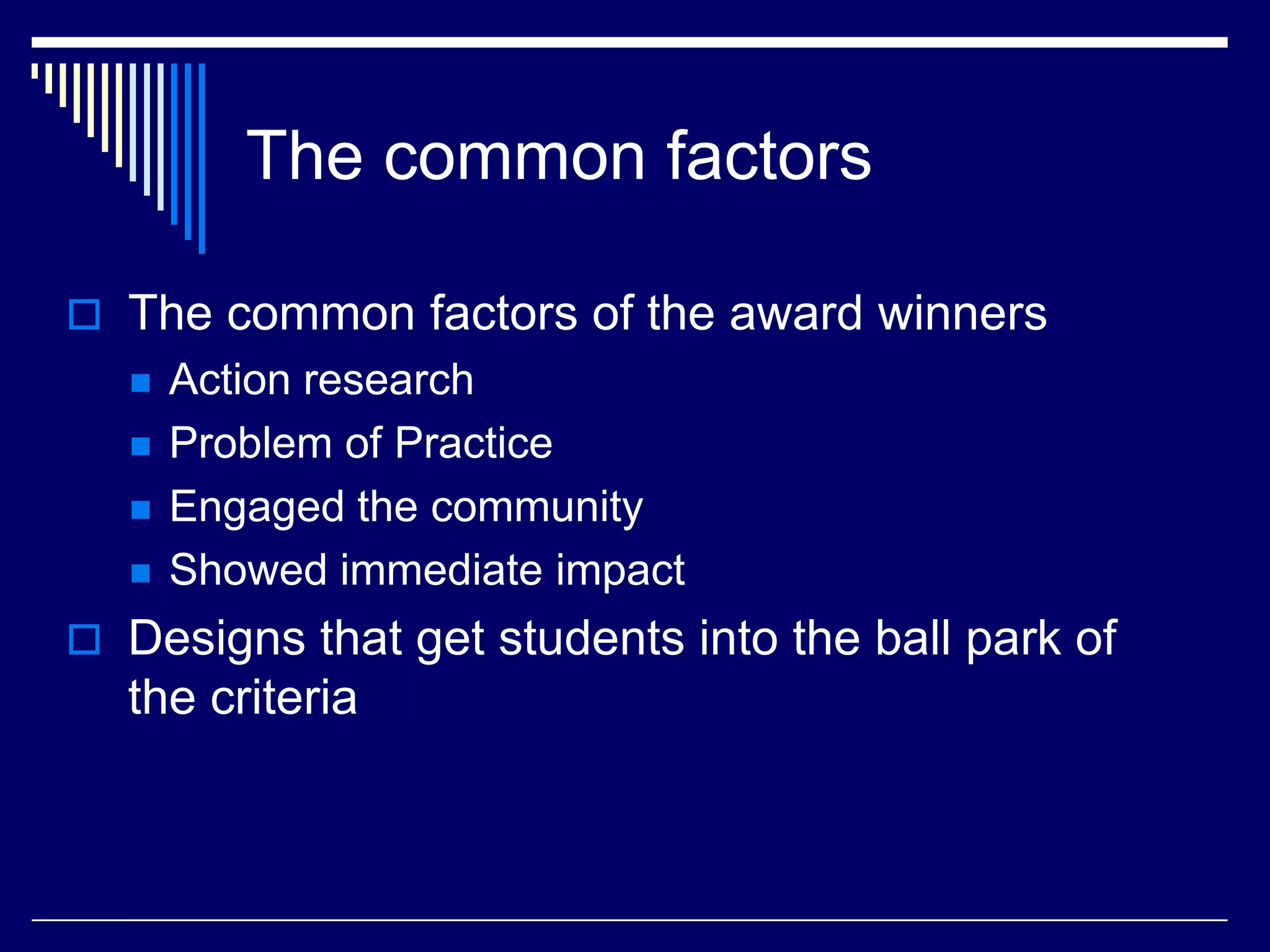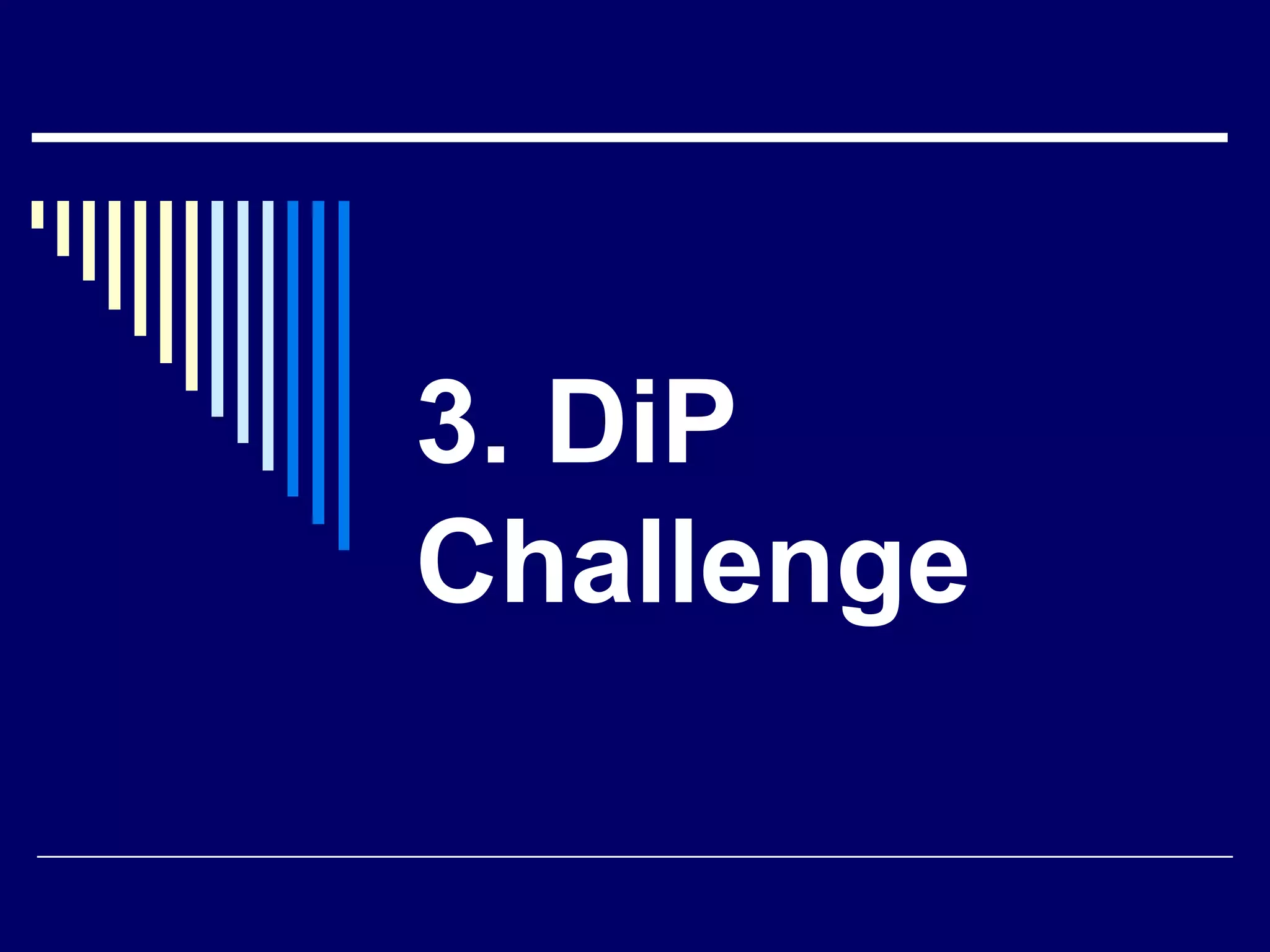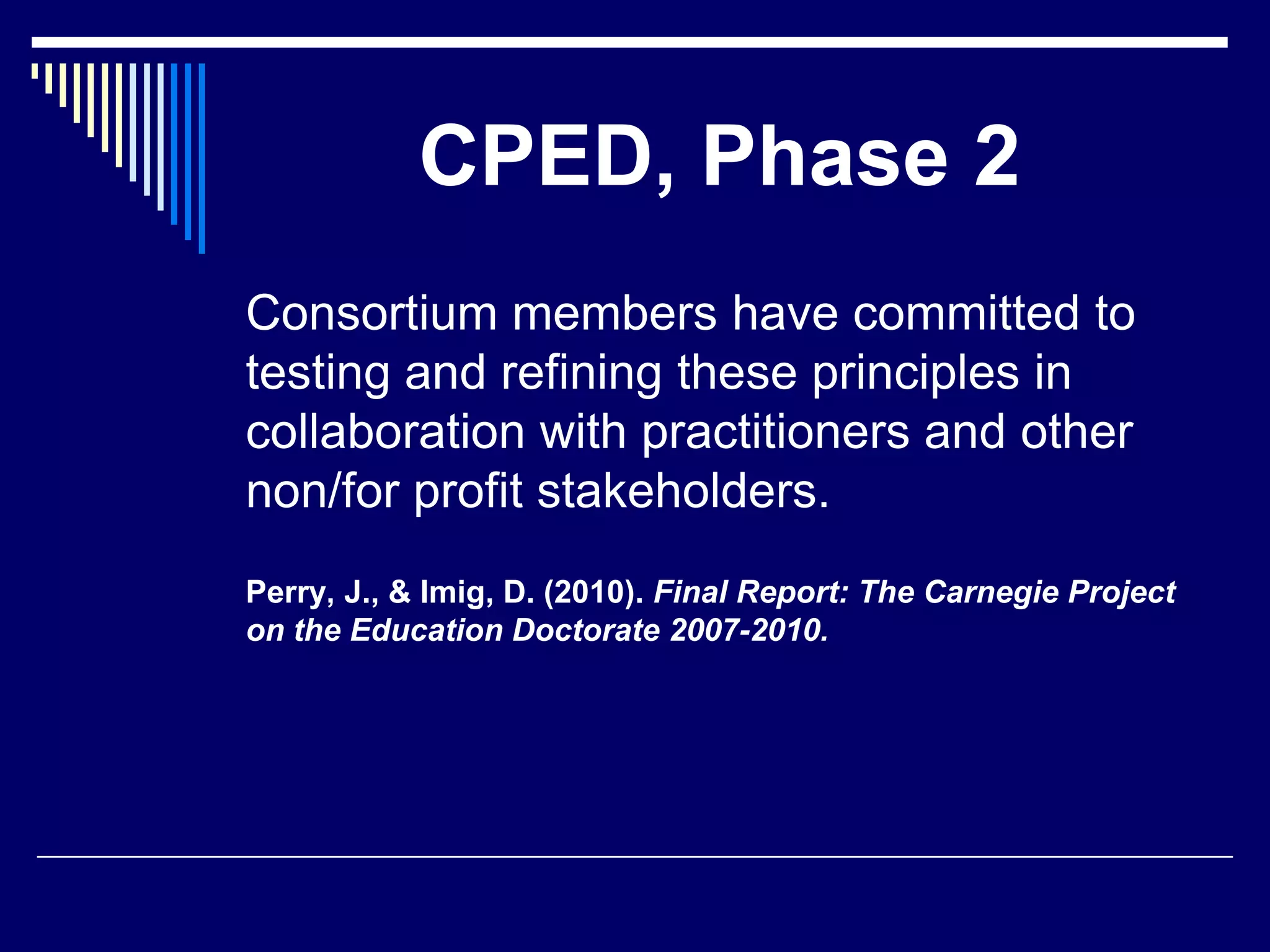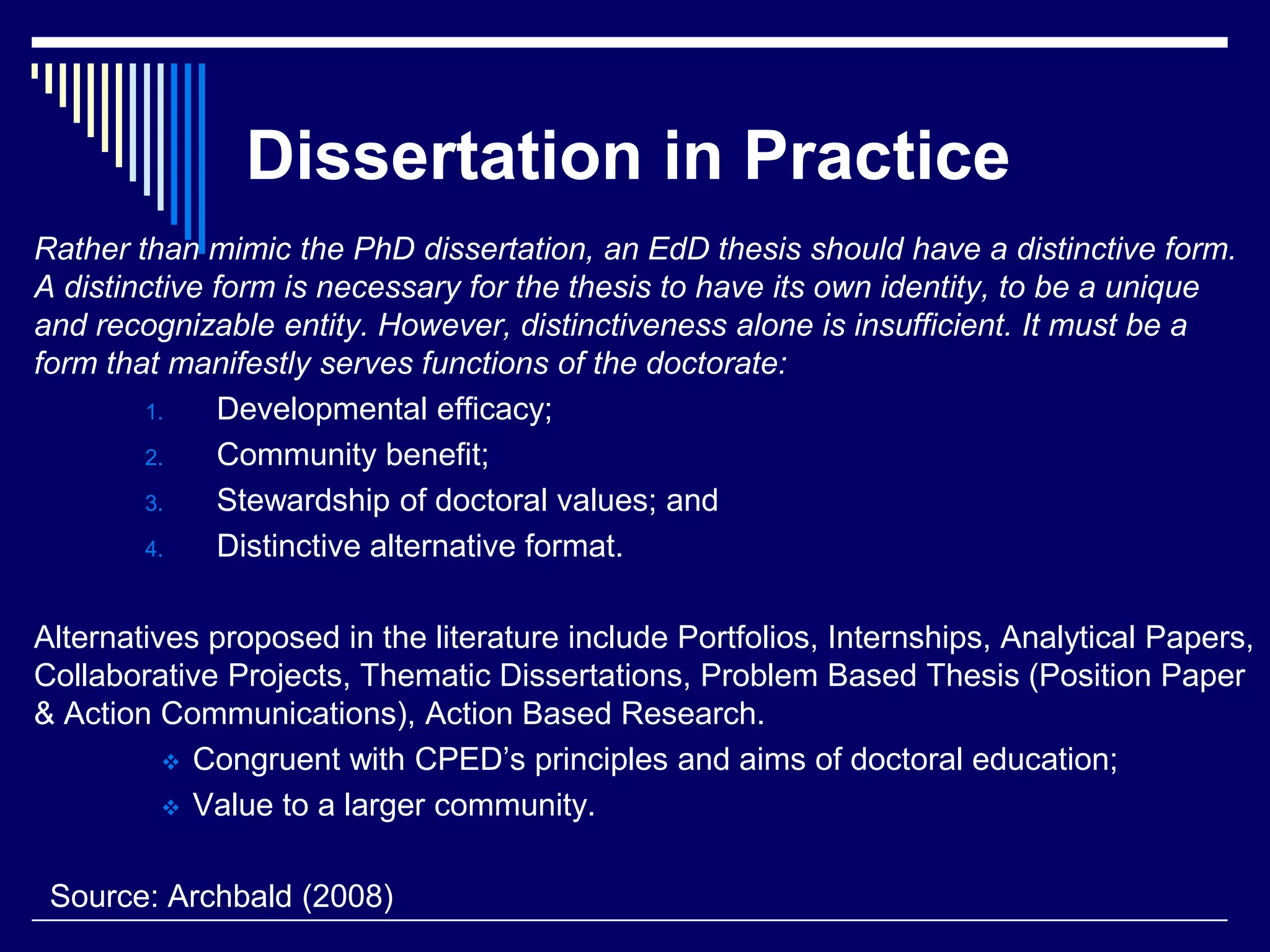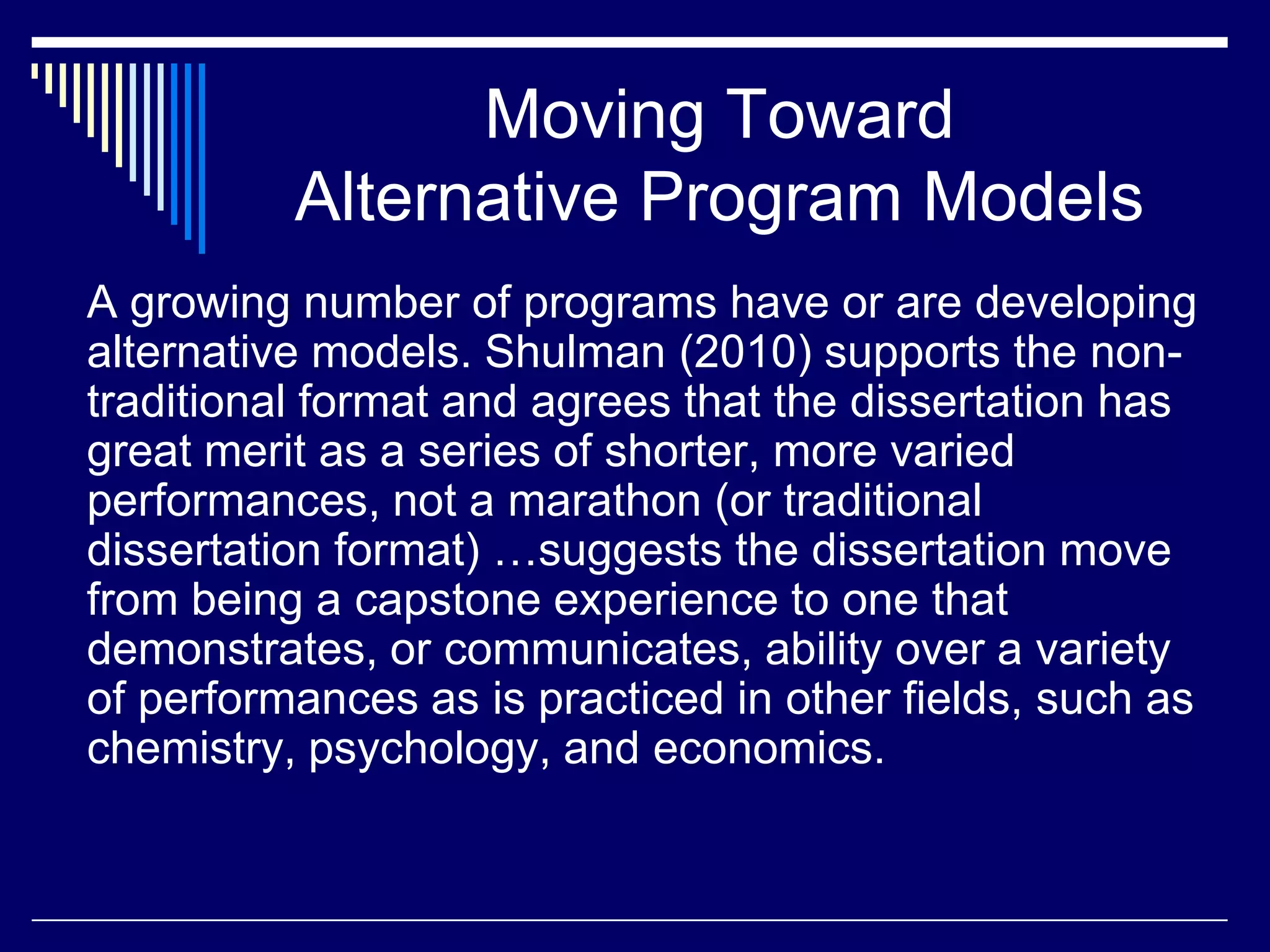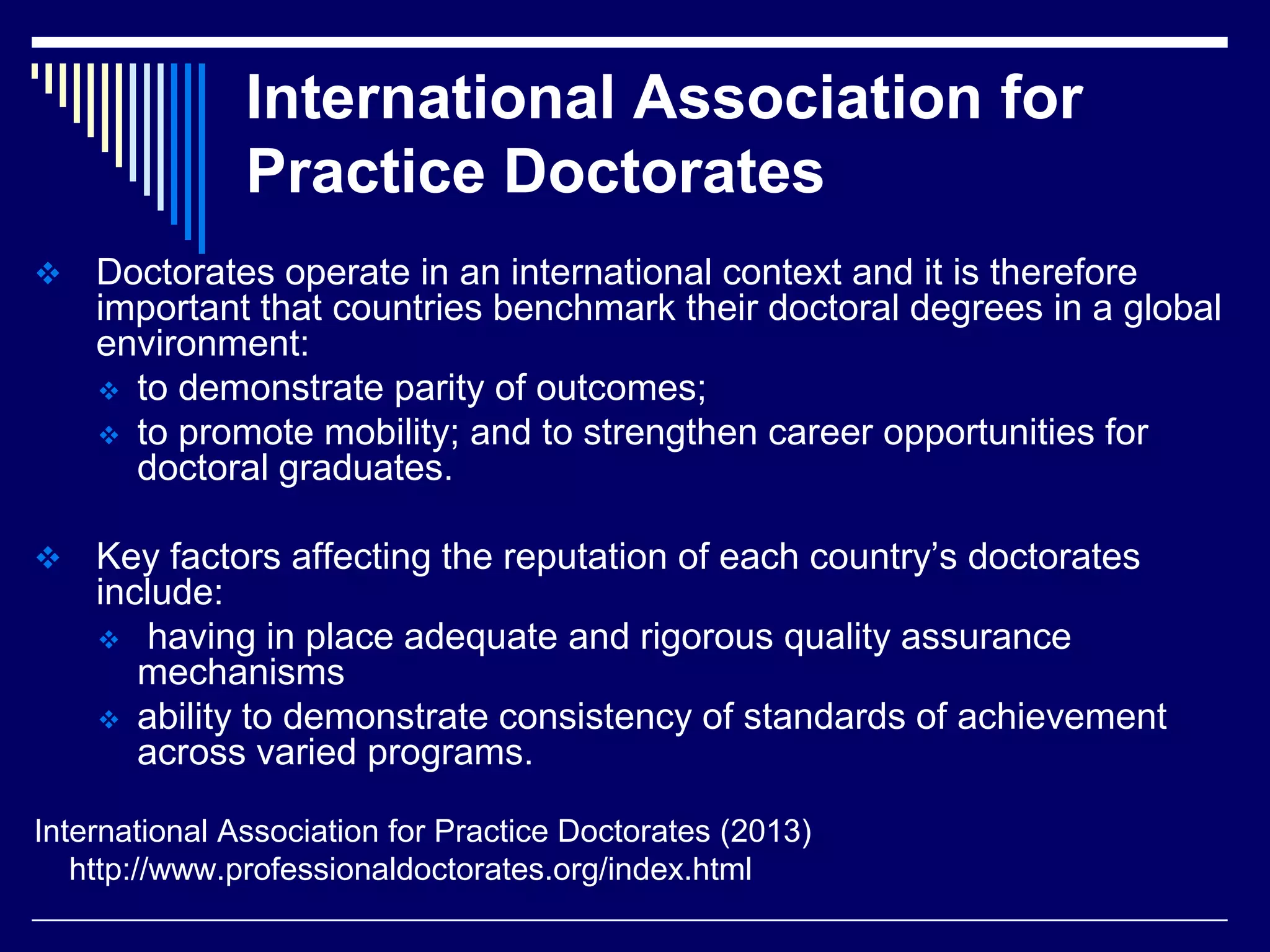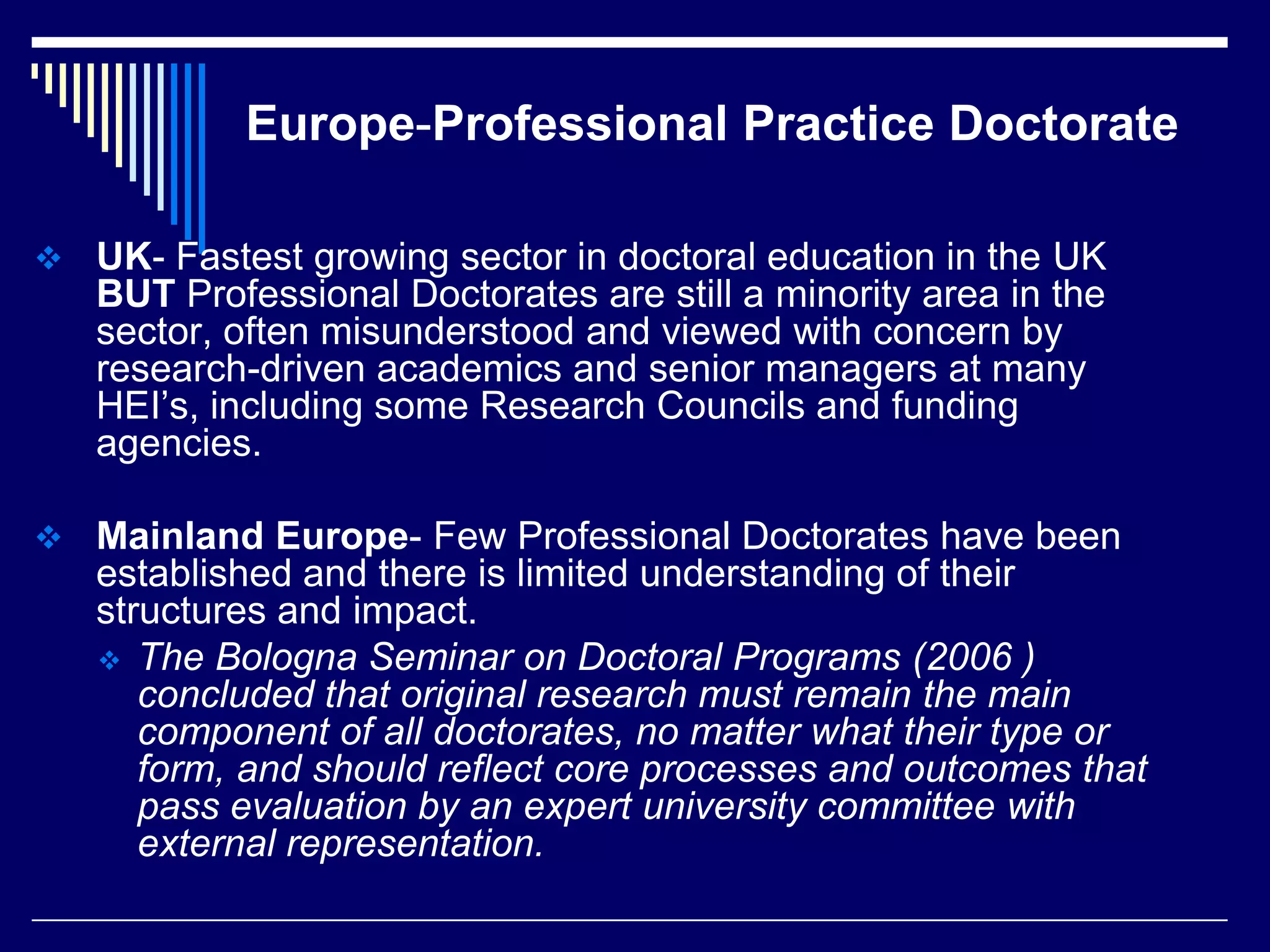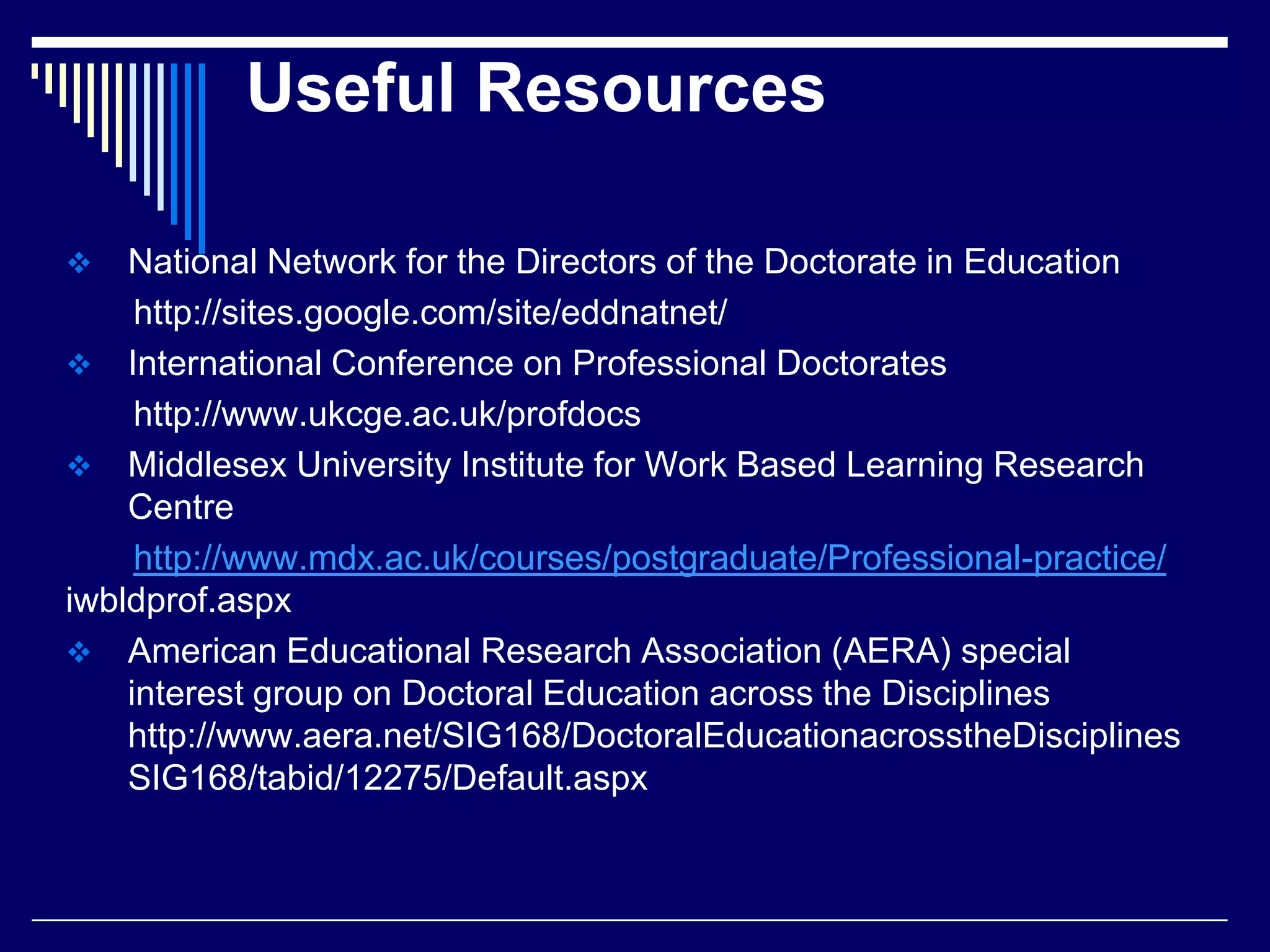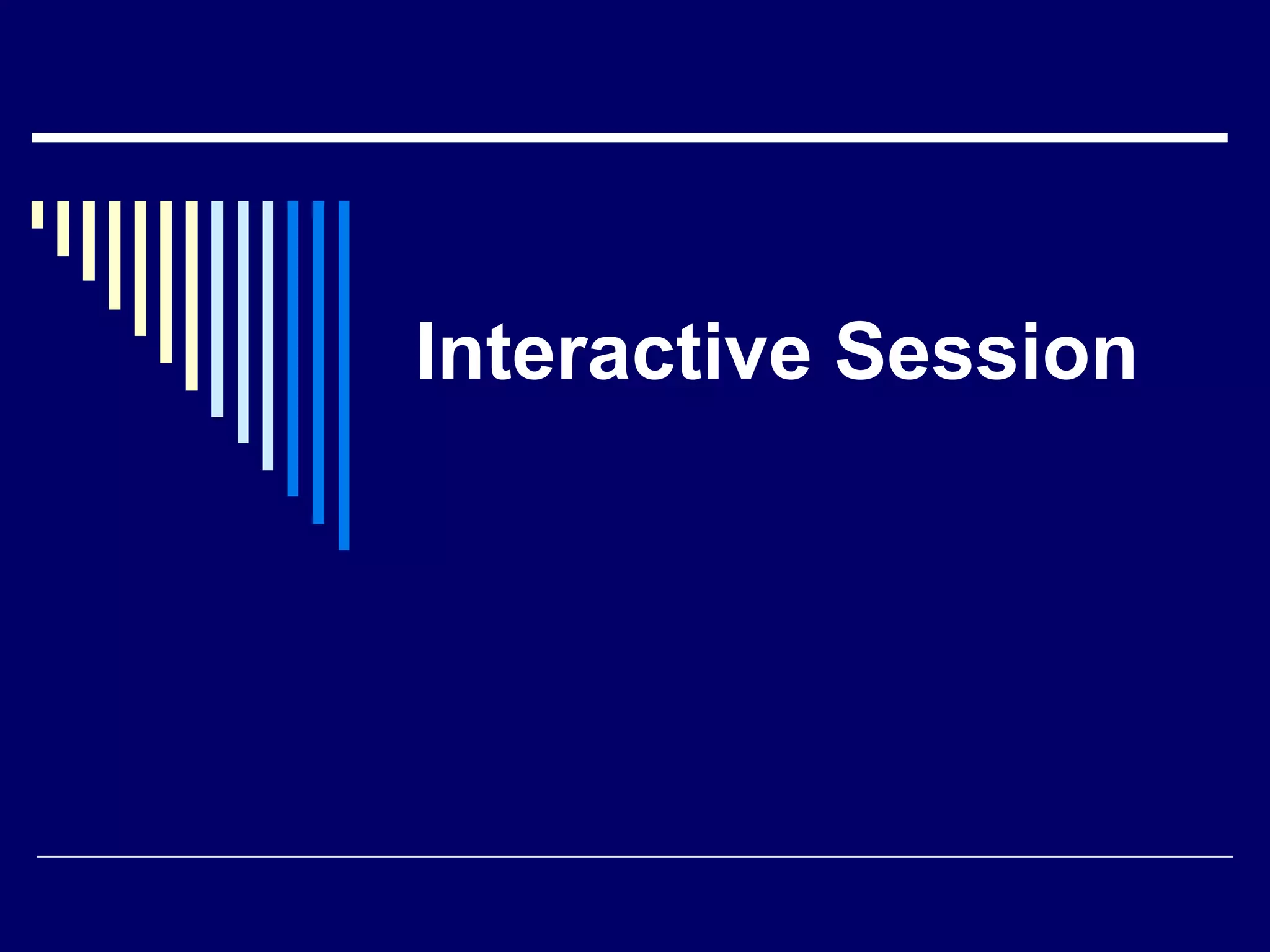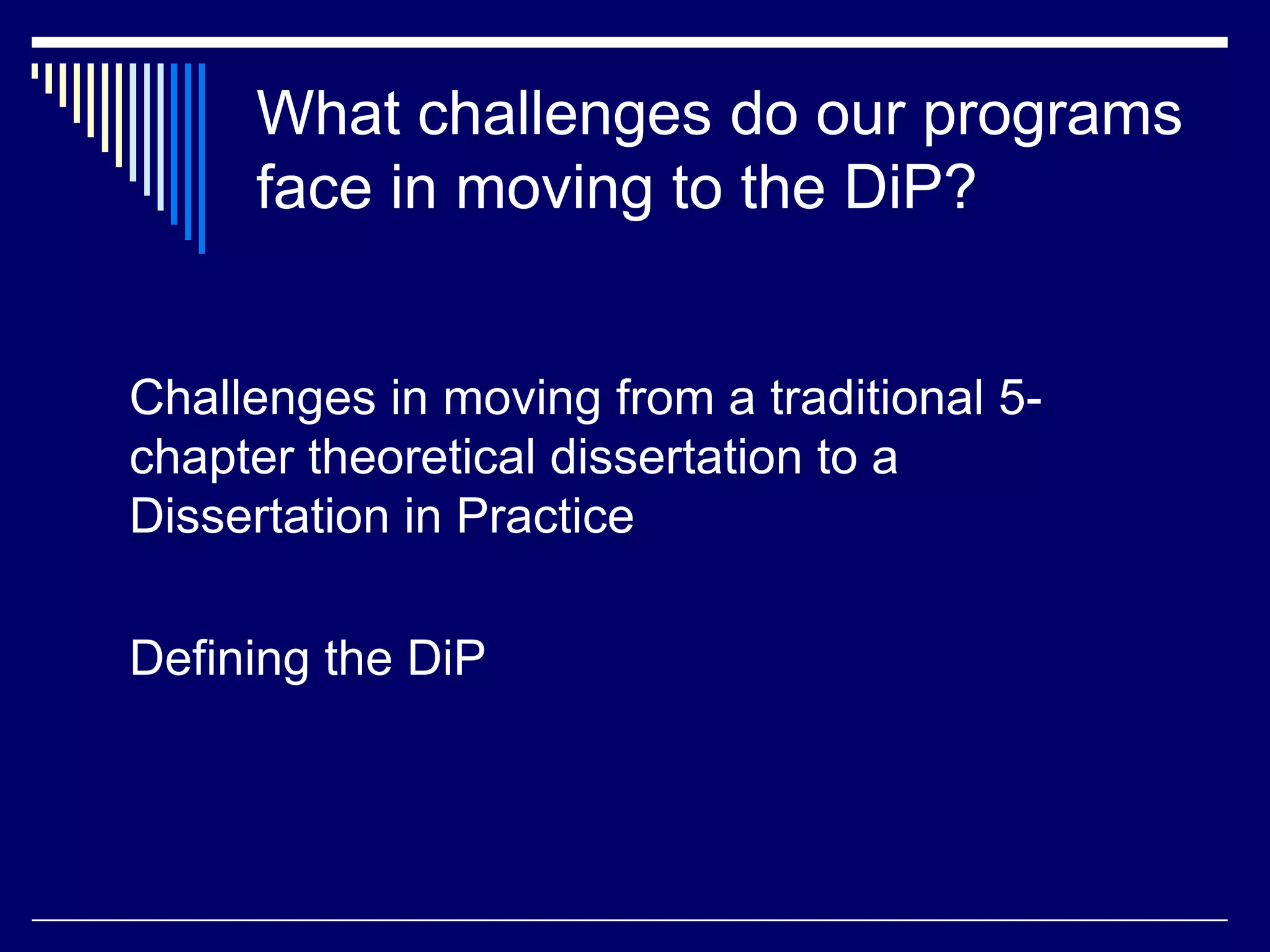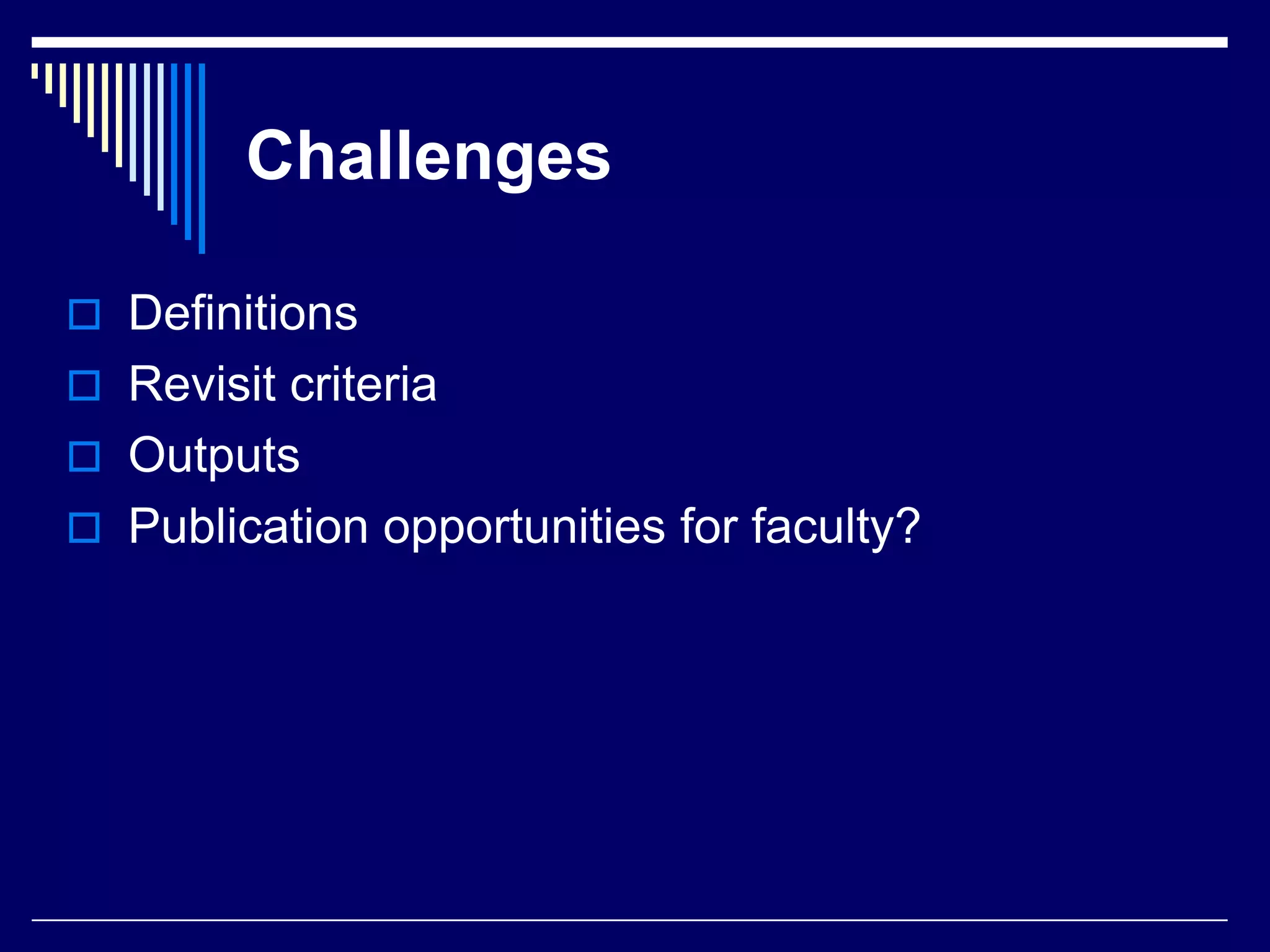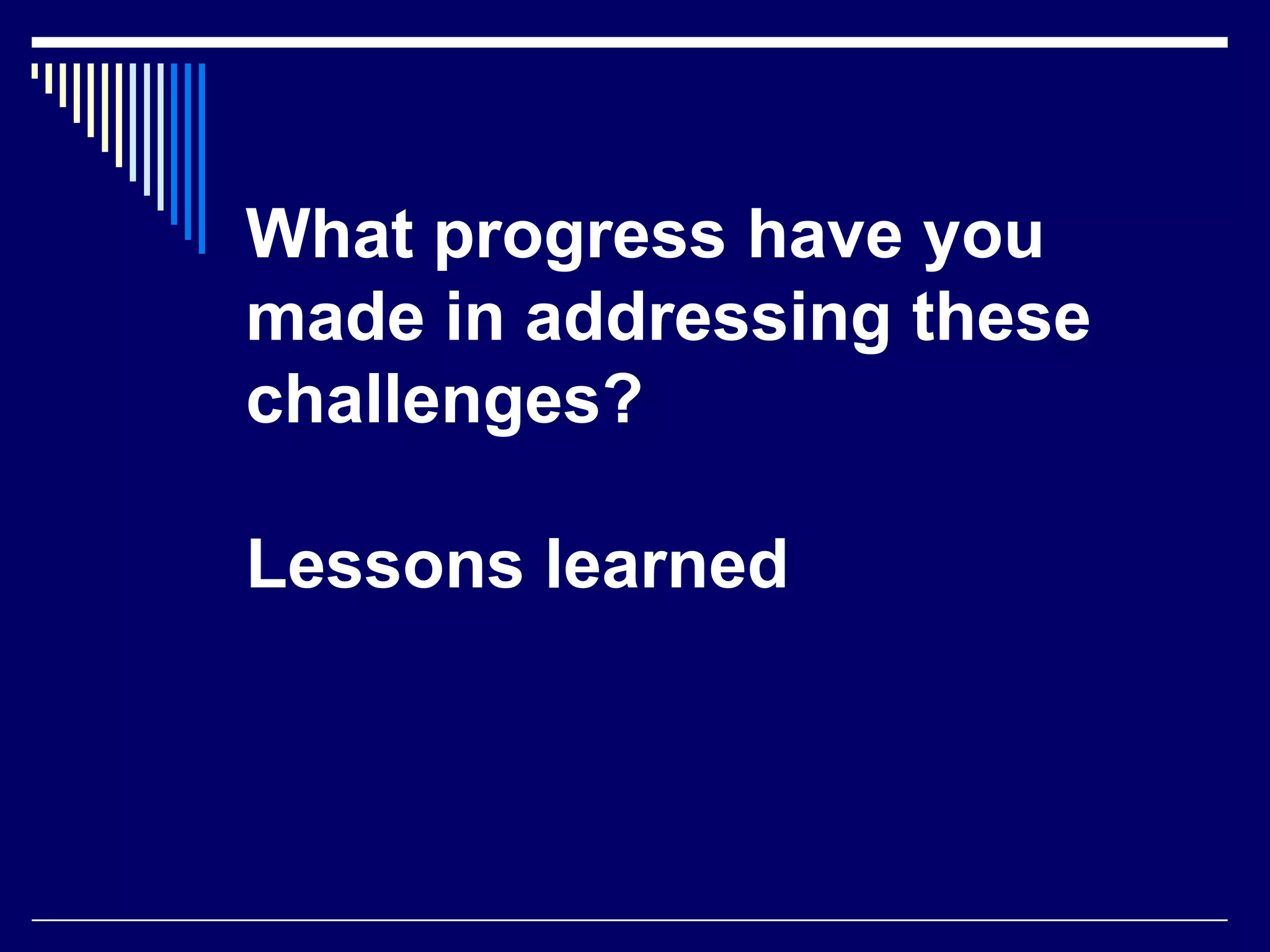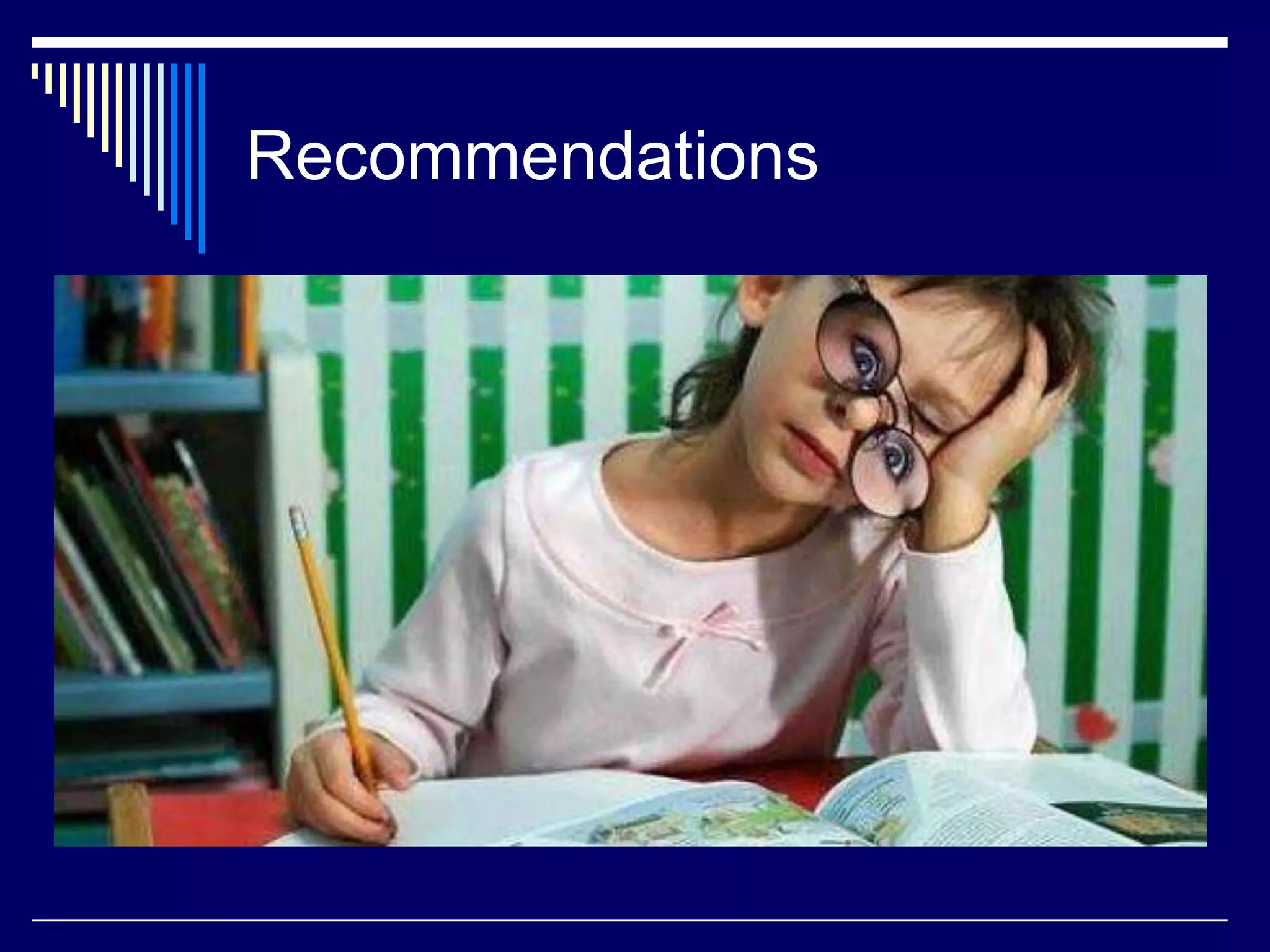This document outlines the background and findings of the Dissertation in Practice (DiP) Awards Committee from 2013-2014. It discusses the evolution of the CPED principles and the DiP assessment criteria. It then presents the committee's process for assessing DiP submissions, including blind peer review. Key findings are that most submissions used qualitative methods, addressed problems of practice, and followed a traditional 5-chapter format. Submissions that demonstrated action research and immediate impact on practice received the highest scores. The document concludes by discussing ongoing challenges around defining alternative DiP models and ensuring quality and consistency internationally.
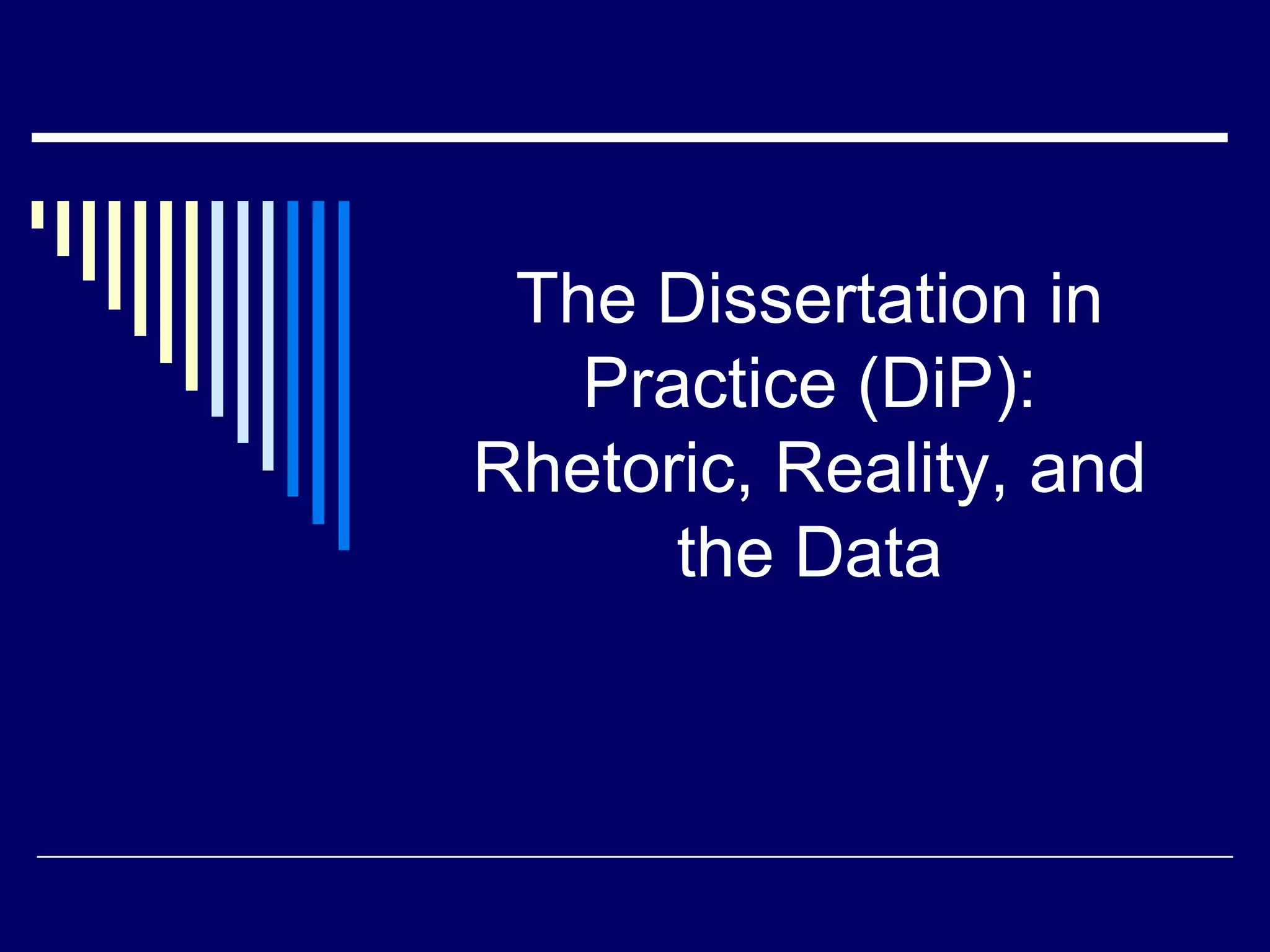
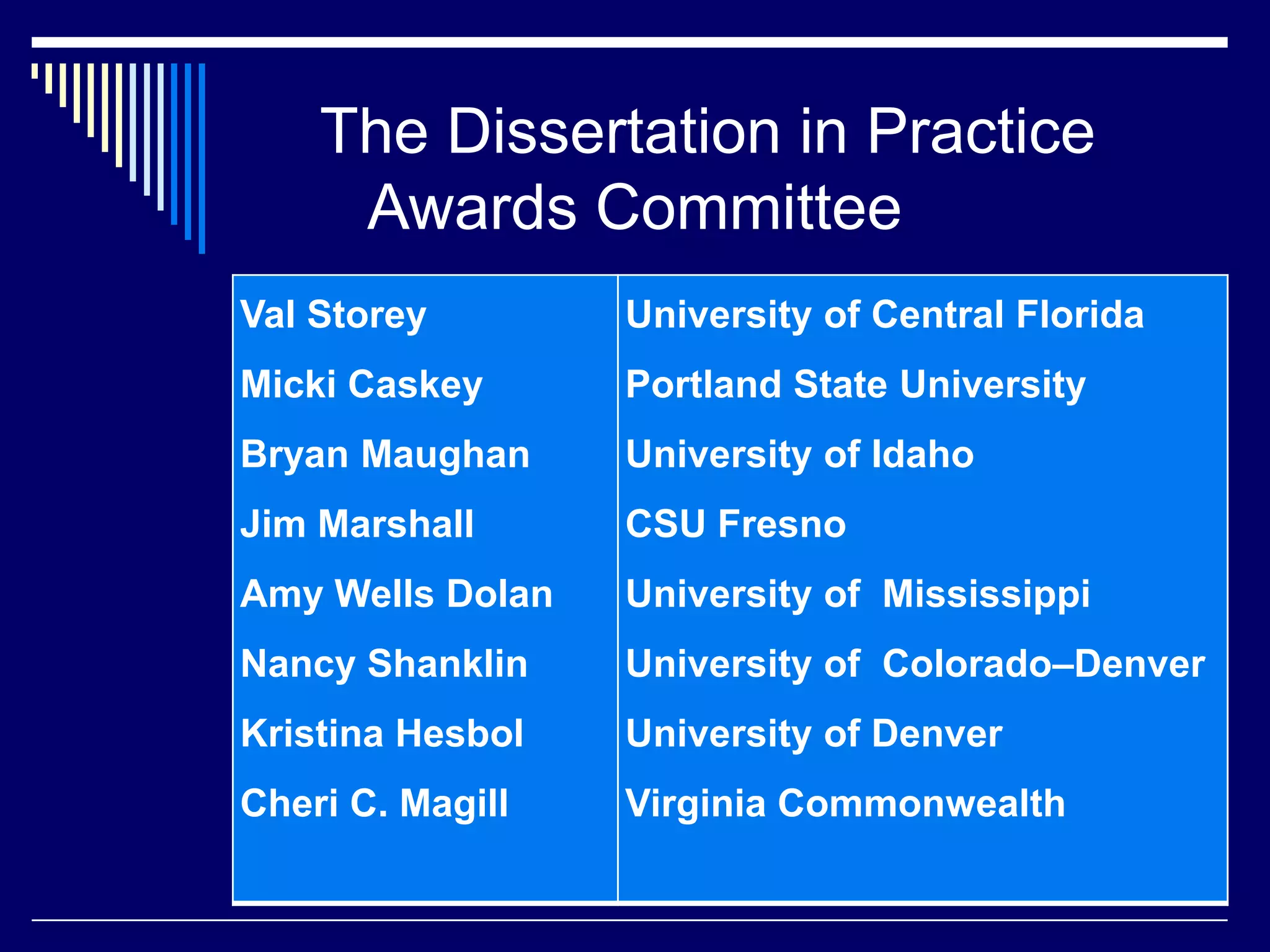
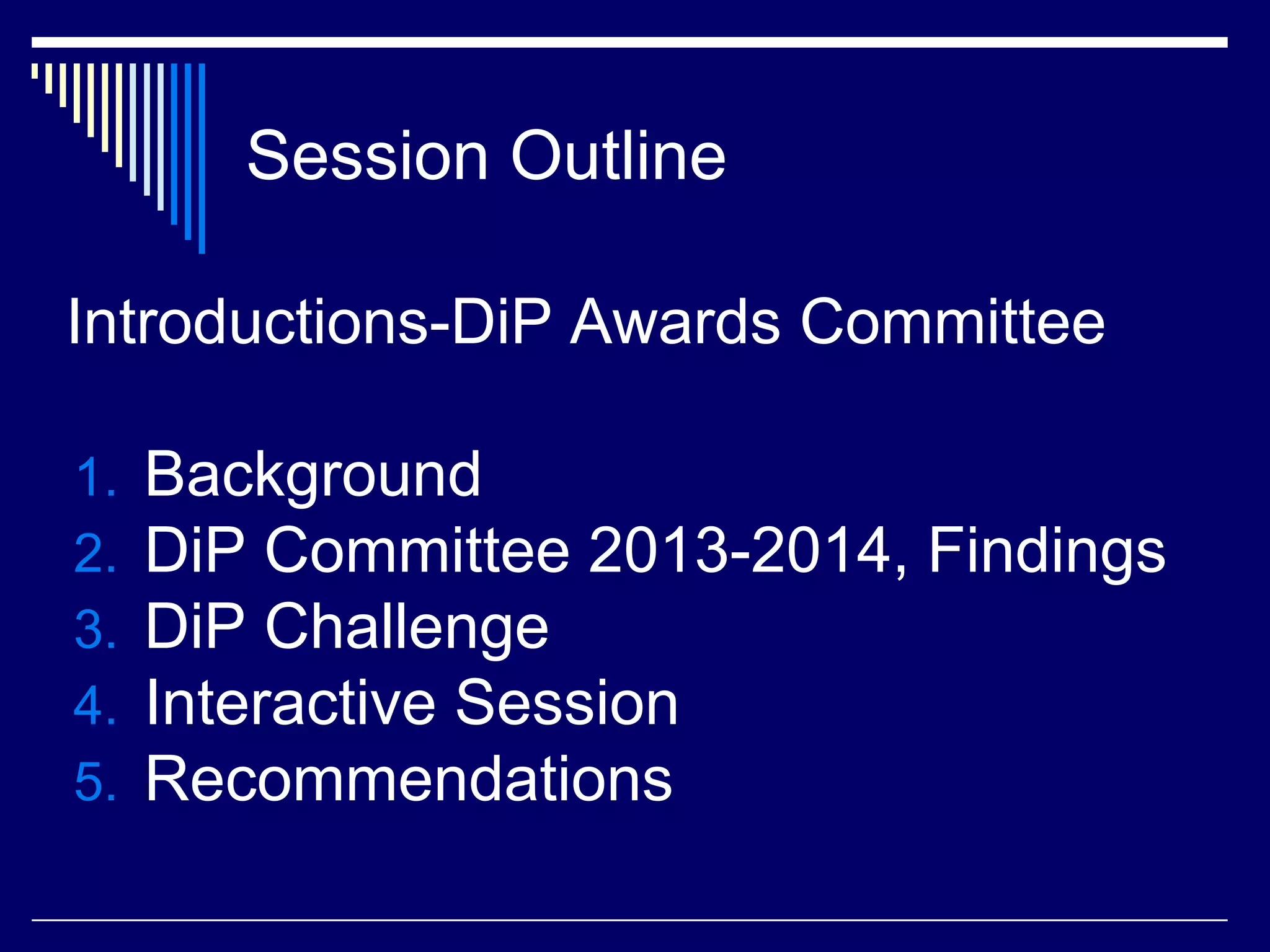
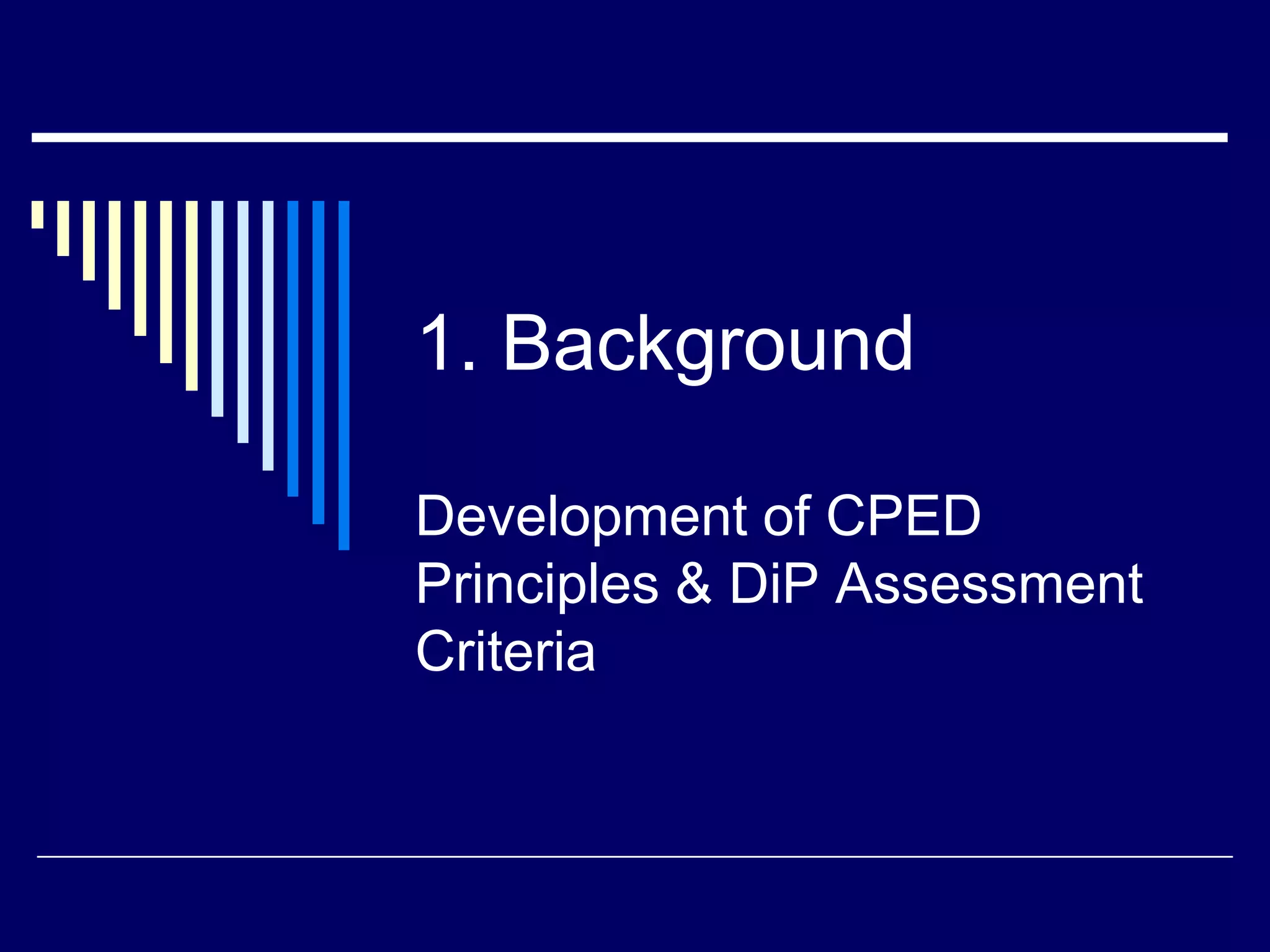

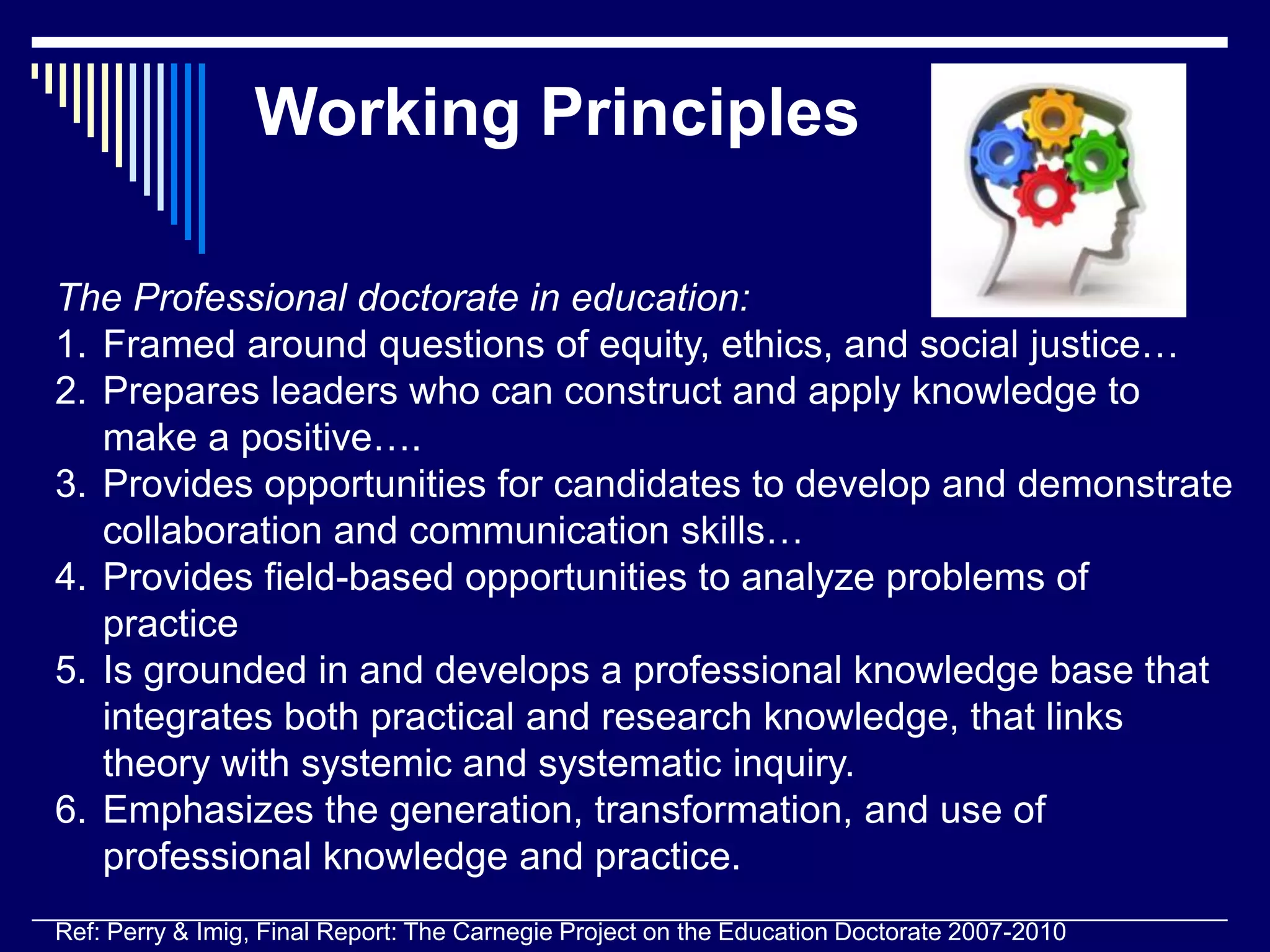
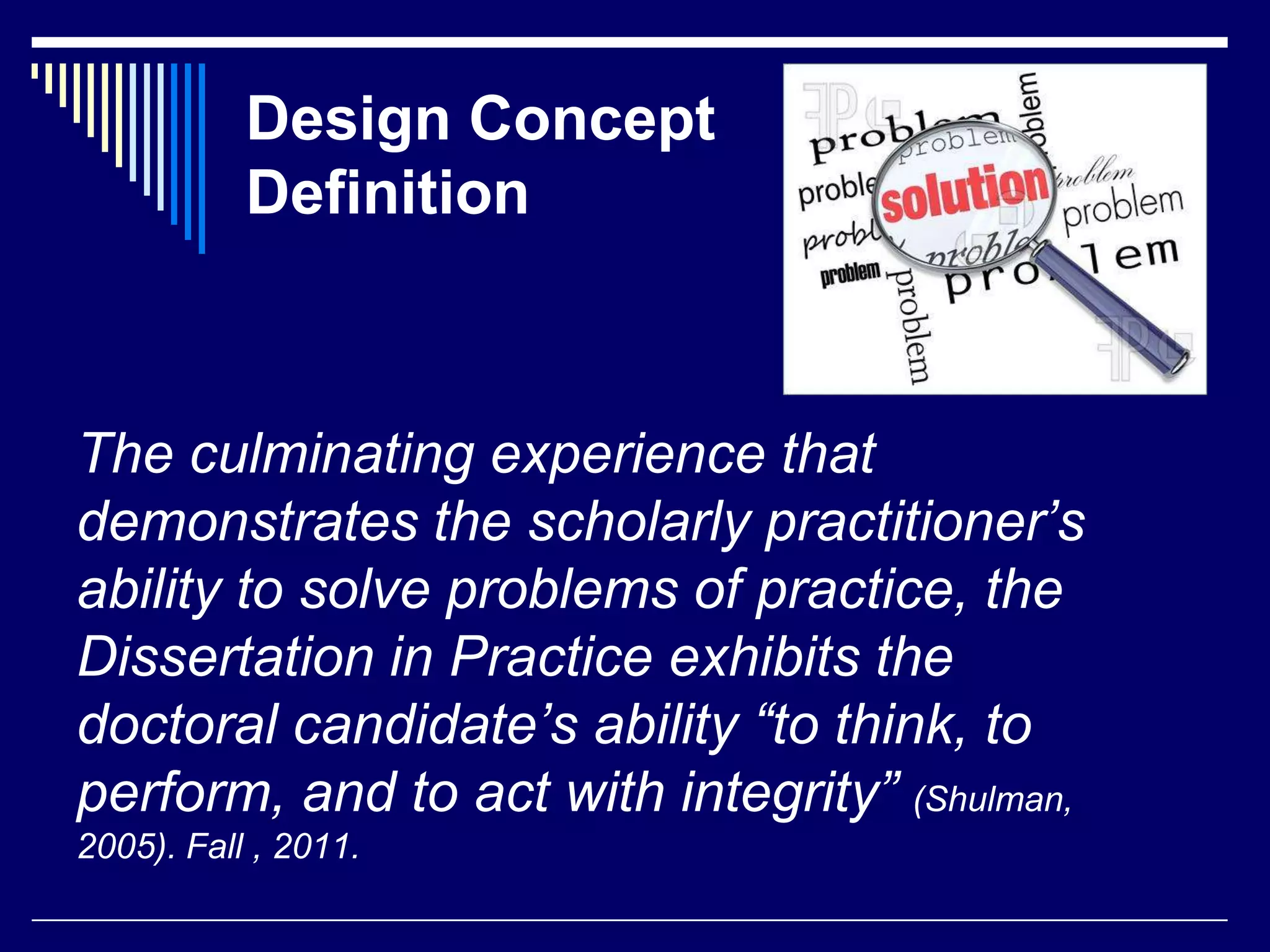
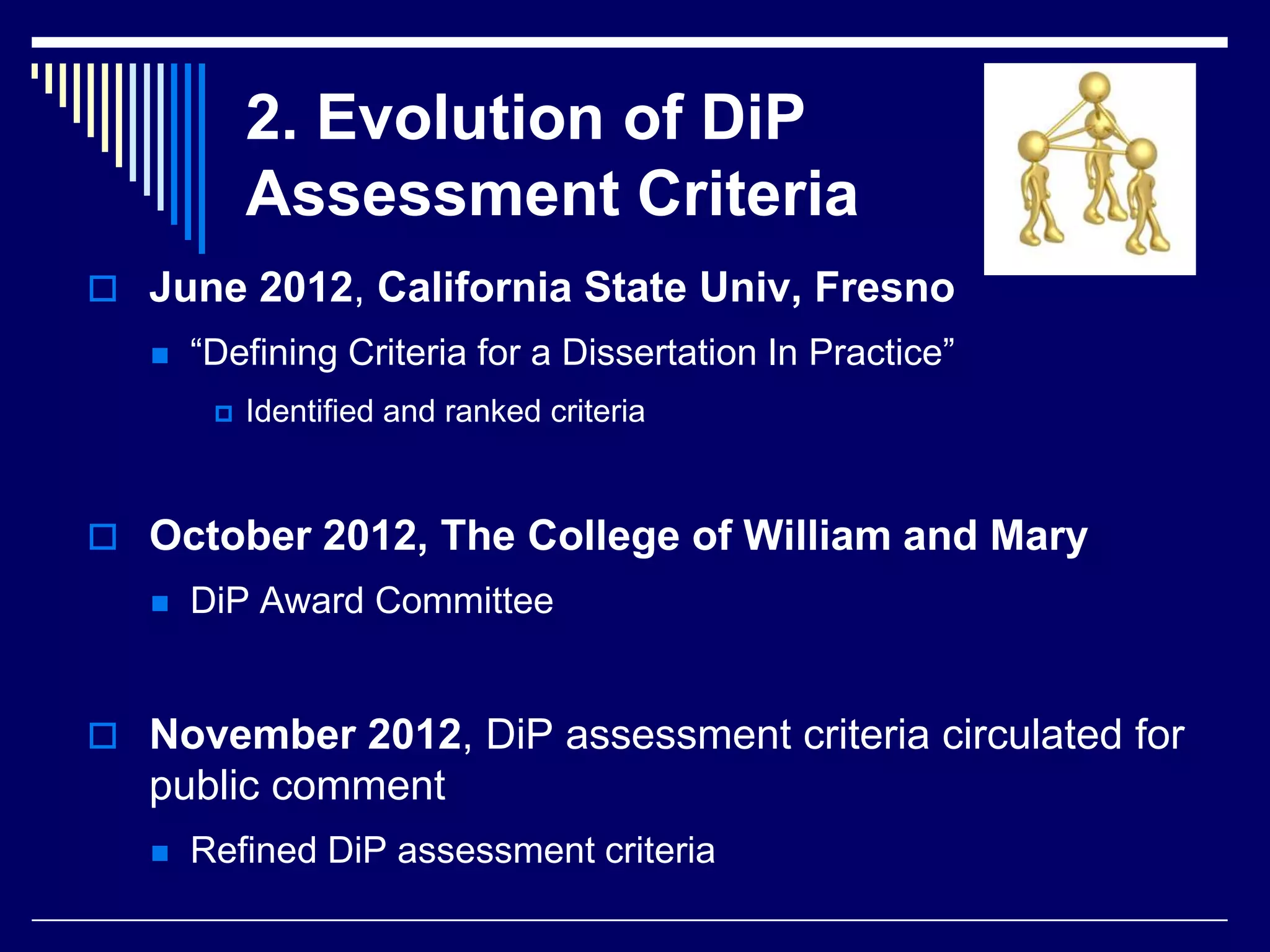
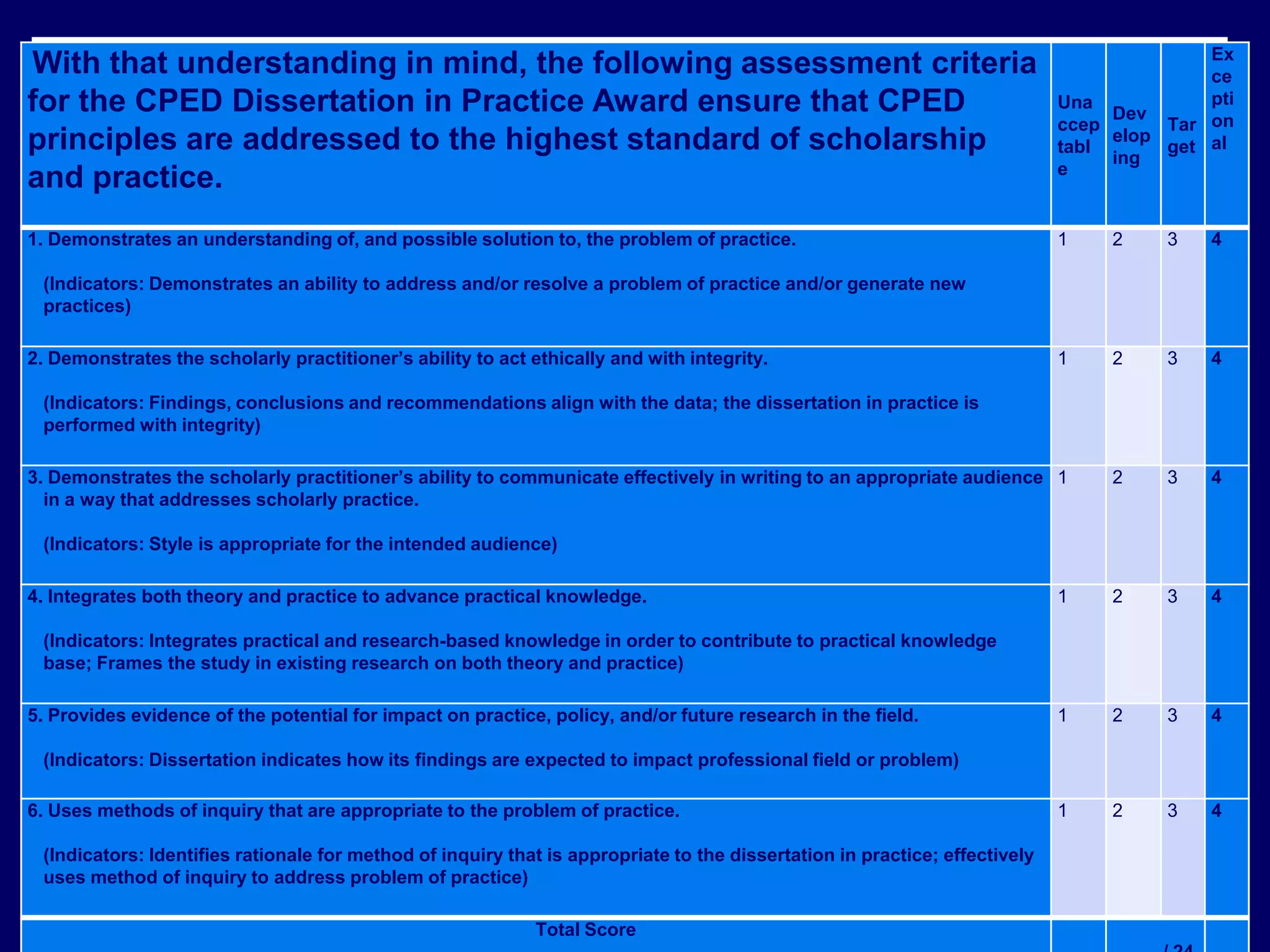
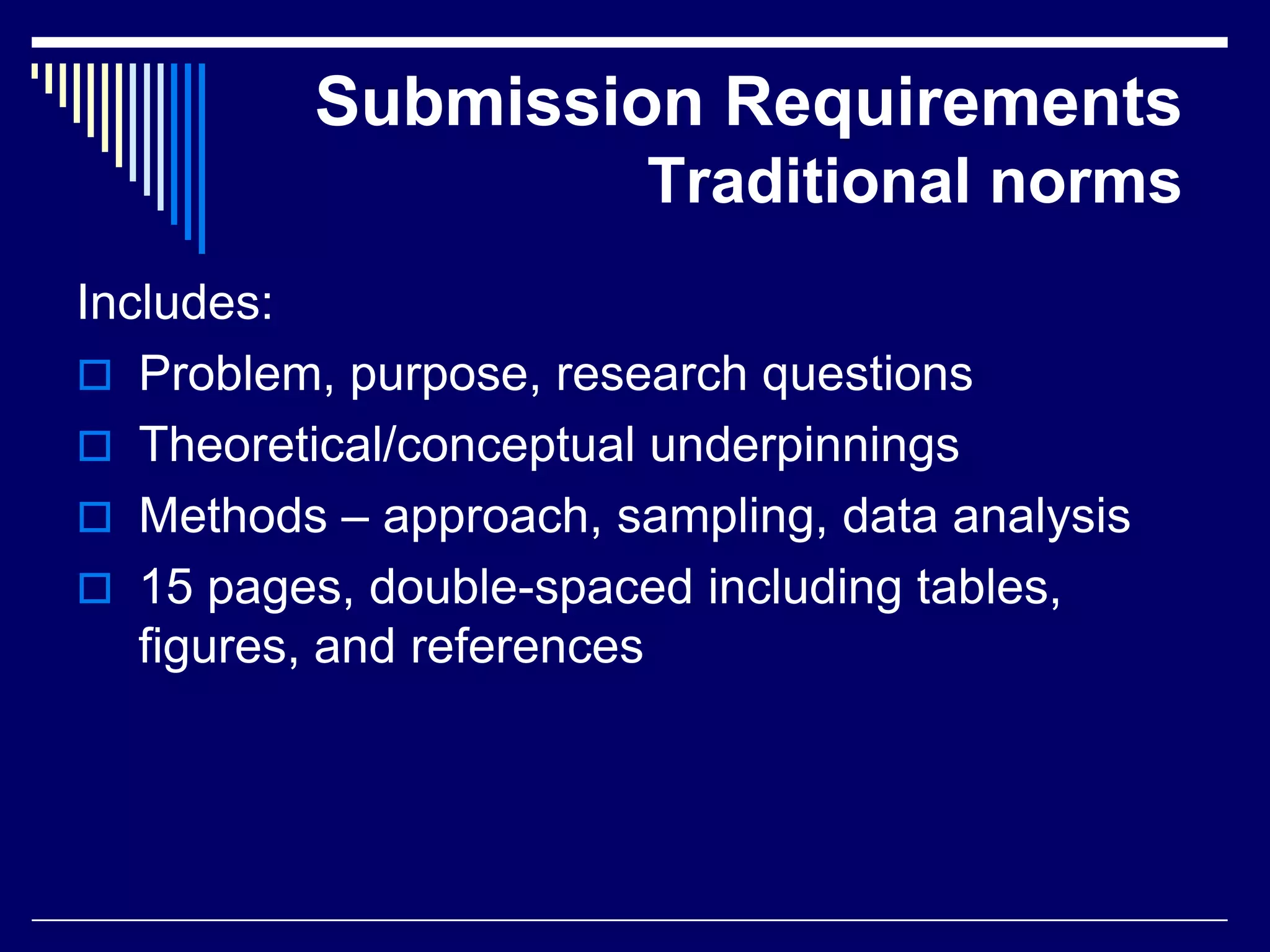

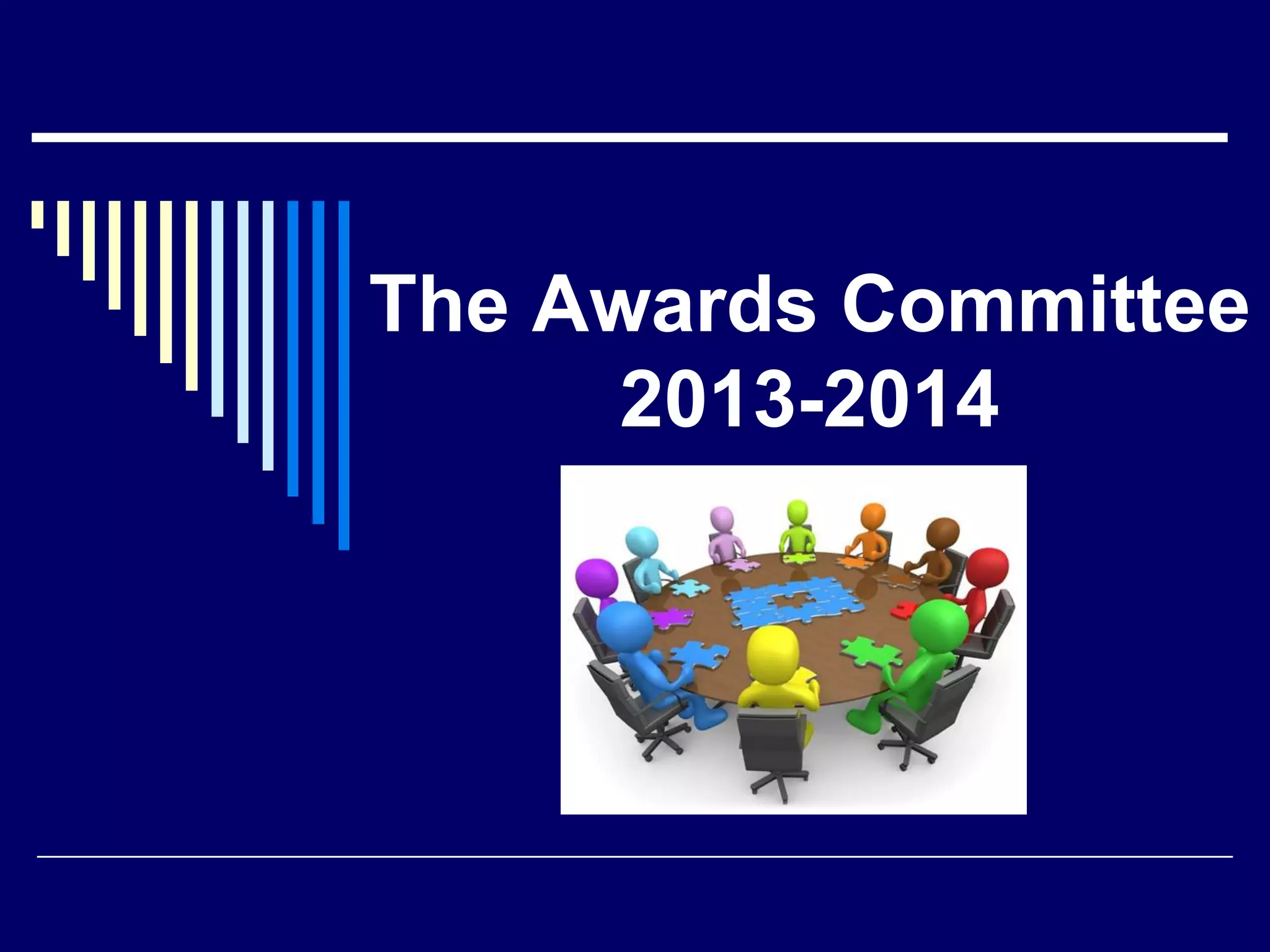

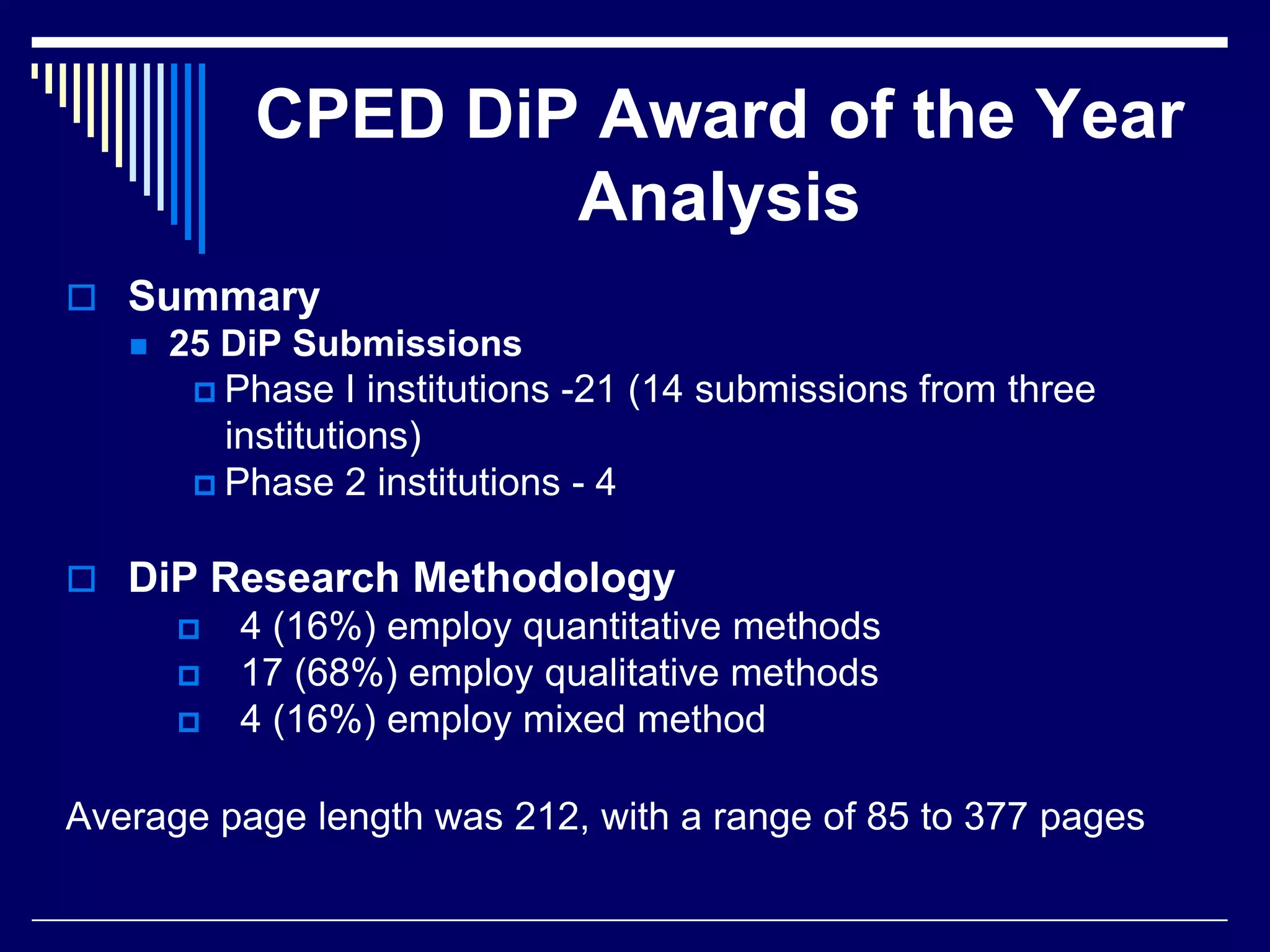
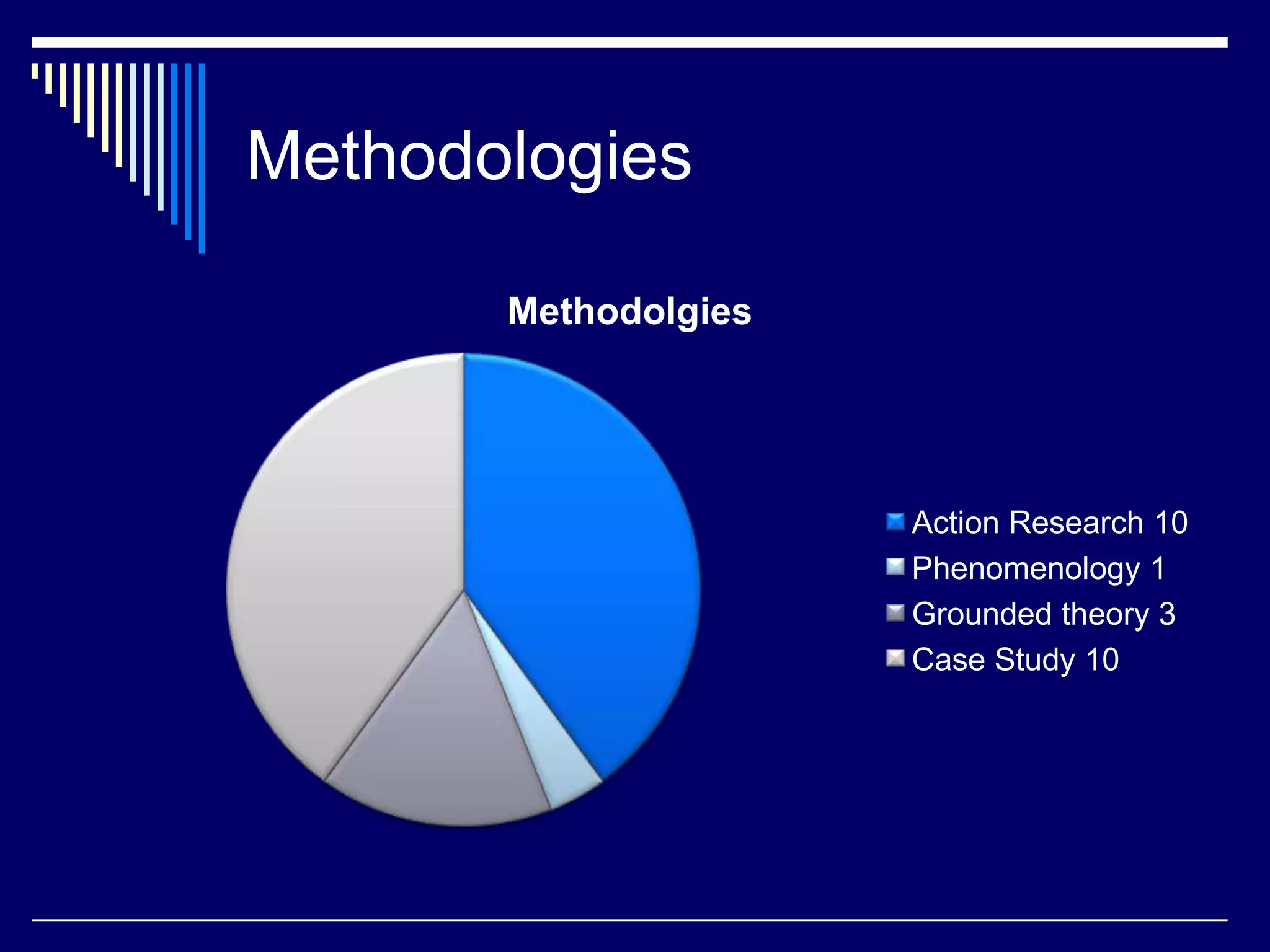


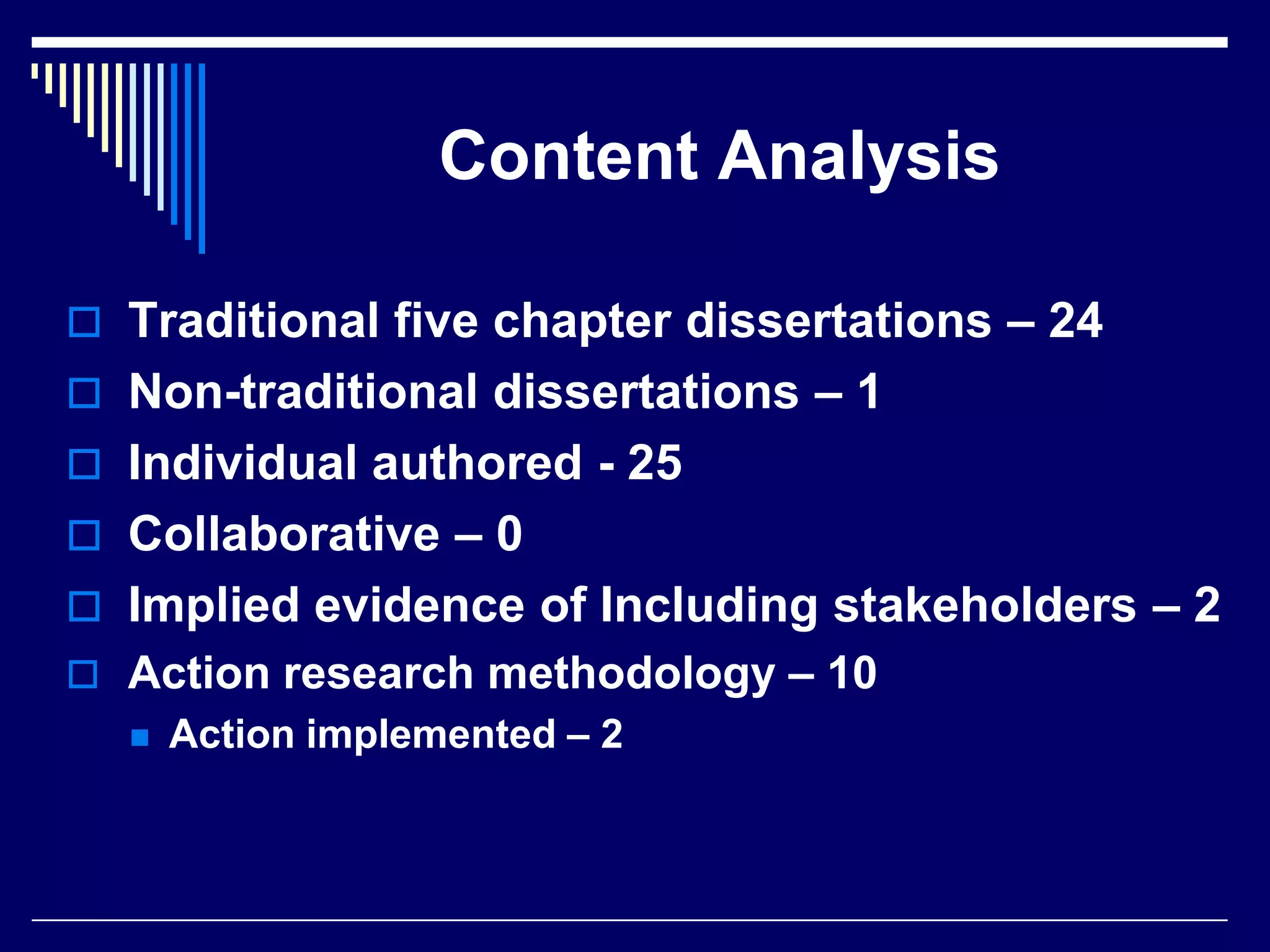
![Problems of Practice
“There is little research on alternative schools…”
“External pressures on higher education…to teach a
diversity of students…”
“Achievement gap in Hispanic students…”
“The United States repeatedly ranks behind other
countries in reading and math achievement.”
“My preservice teachers did not have multiple
opportunities to plan and teach math lessons in classes
and in their field experience. I did not have control over
[this].”
“I propose cooperative learning can increase student
learning as self-efficacy, as well as course completion.”](https://image.slidesharecdn.com/dipcommitteepresentation-131118190038-phpapp01/75/DiP-committee-presentation-19-2048.jpg)
